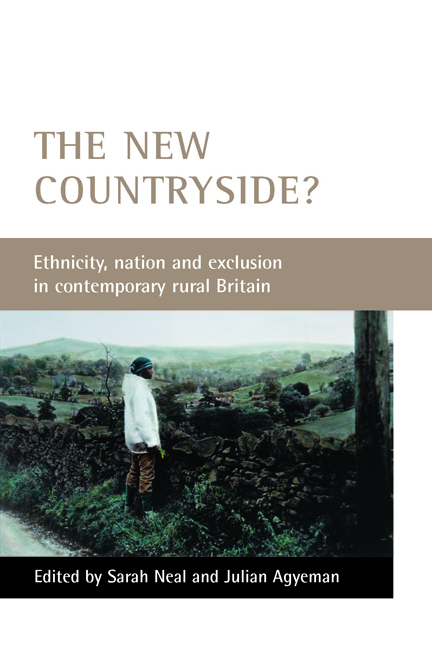six - New countryside? New country: visible communities in the English national parks
Published online by Cambridge University Press: 18 January 2022
Summary
The question of identification is never the affirmation of a pre-given identity, never a self-fulfilled prophecy – it is always the production of an ‘image’ of identity and the transformation of the subject in assuming that image … identity is never an a priori, nor a finished product; it is only ever the problematic process of access to an ‘image’ of totality. (Bhabha, 1986, pp xvi-xvii)
Introduction
The 2001 census re-confirmed that England is a multi-ethnic society. Indeed, there has been much recent debate regarding ethnicity and difference, multiculturalism, cosmopolitanism, hybridity and multiple identities within academia, among policy makers and across the wider public realm in the UK. The Parekh Report (2000), in particular, addresses the complex political and social issues surrounding identity, citizenship, difference, cohesion and equality (see also Alibhai-Brown, 2001; Kundnani, 2001). However, these debates are invariably connected to the urban sphere, while the dominant representation of the English countryside continues to portray a racialised (white) country scene as a symbol of idyllic innocence and, crucially, as repository of a ‘true’, originary Englishness (Short, 1991; Matless, 1998). That is, the English countryside continues to be interpreted as the ‘real’ England for ‘real’ English people, in a construction that appropriates ‘real’ as ‘white’, excluding a range of groups from accessing the countryside, both physically and emotionally (Cloke and Little, 1997; Milbourne, 1997). The perceived absence of ‘ethnic minorities’ in rural spaces – as visitors, residents or in its symbolism – continues to belie the description of English society as multi-ethnic (Agyeman and Spooner, 1997).
There is, then, a substantial gap between the burgeoning discourses of multi-ethnicity, and the ‘traditional’ institutional representations and social understandings involved with rural public space. Visible communities are often theorised, researched and written as ‘rural others’, in recognition of the structural inequalities and cultural prejudices that non-white people face in English society, which both constitute and are reinforced by a dominant racialised version of the countryside. This chapter is not intended to challenge the paradigm that calls for greater examination of the racisms affecting visible communities in rural spaces, in the effort to tackle those racisms and the exclusions they sustain.
- Type
- Chapter
- Information
- The New Countryside?Ethnicity, Nation and Exclusion in Contemporary Rural Britain, pp. 149 - 172Publisher: Bristol University PressPrint publication year: 2006
- 1
- Cited by

